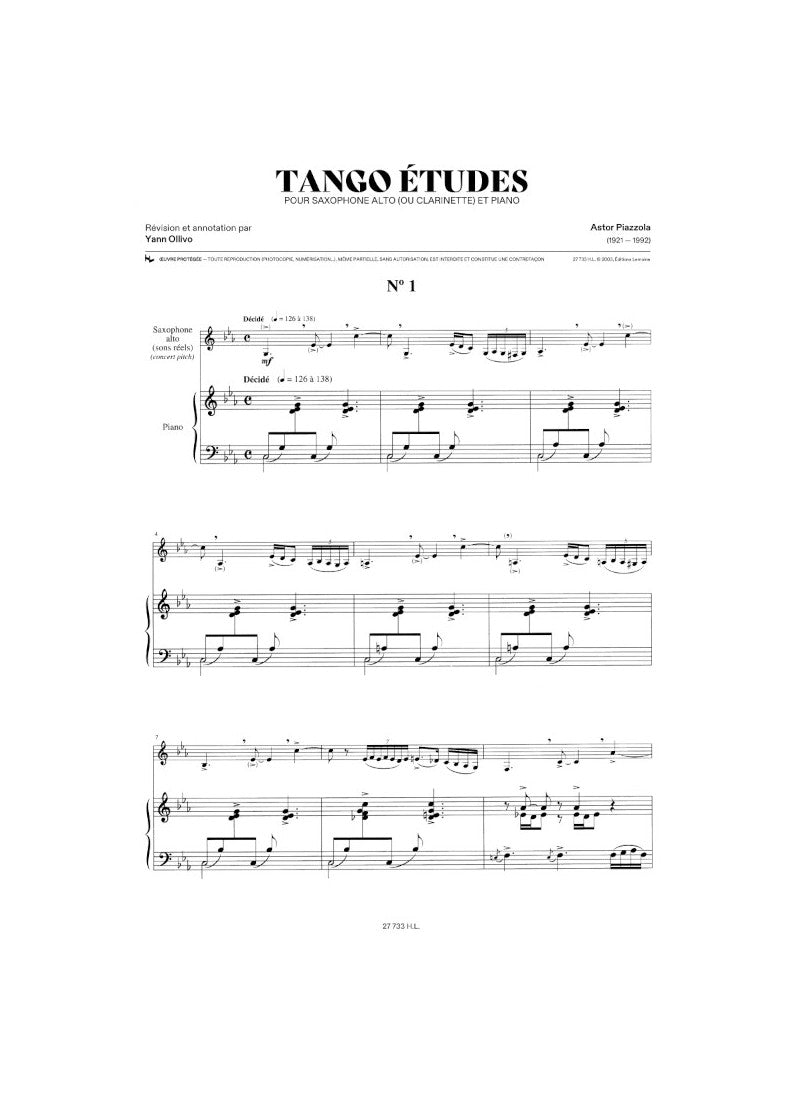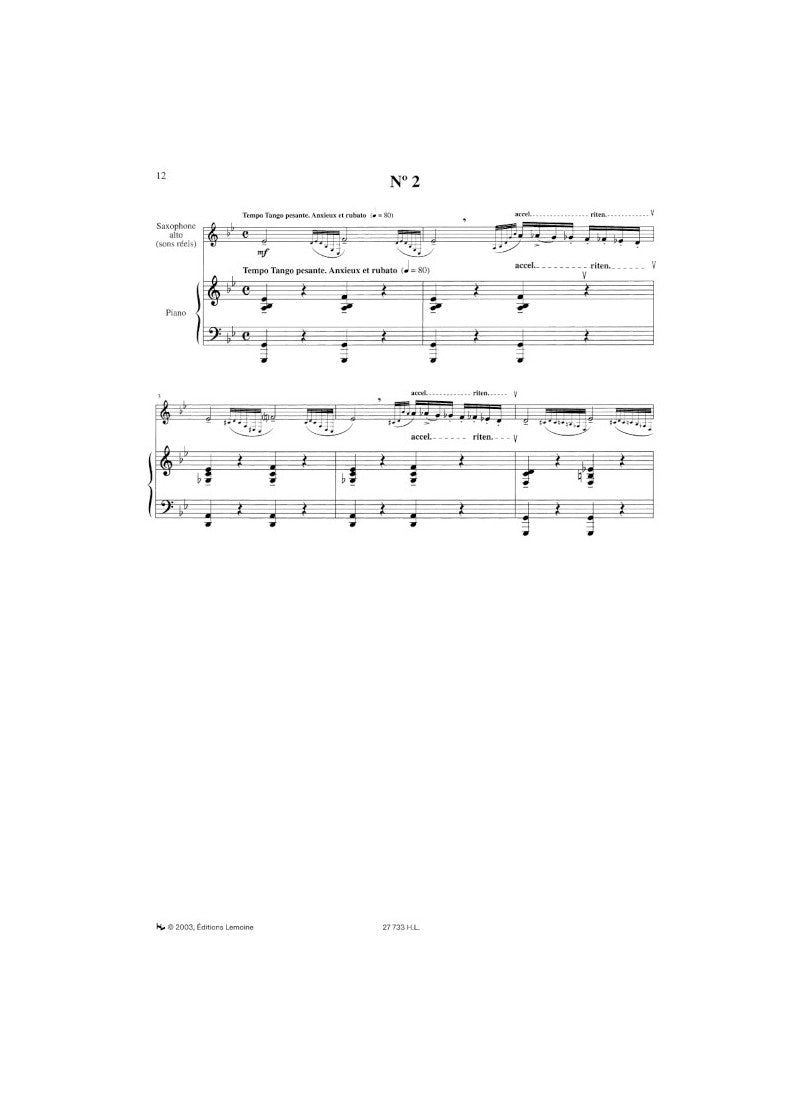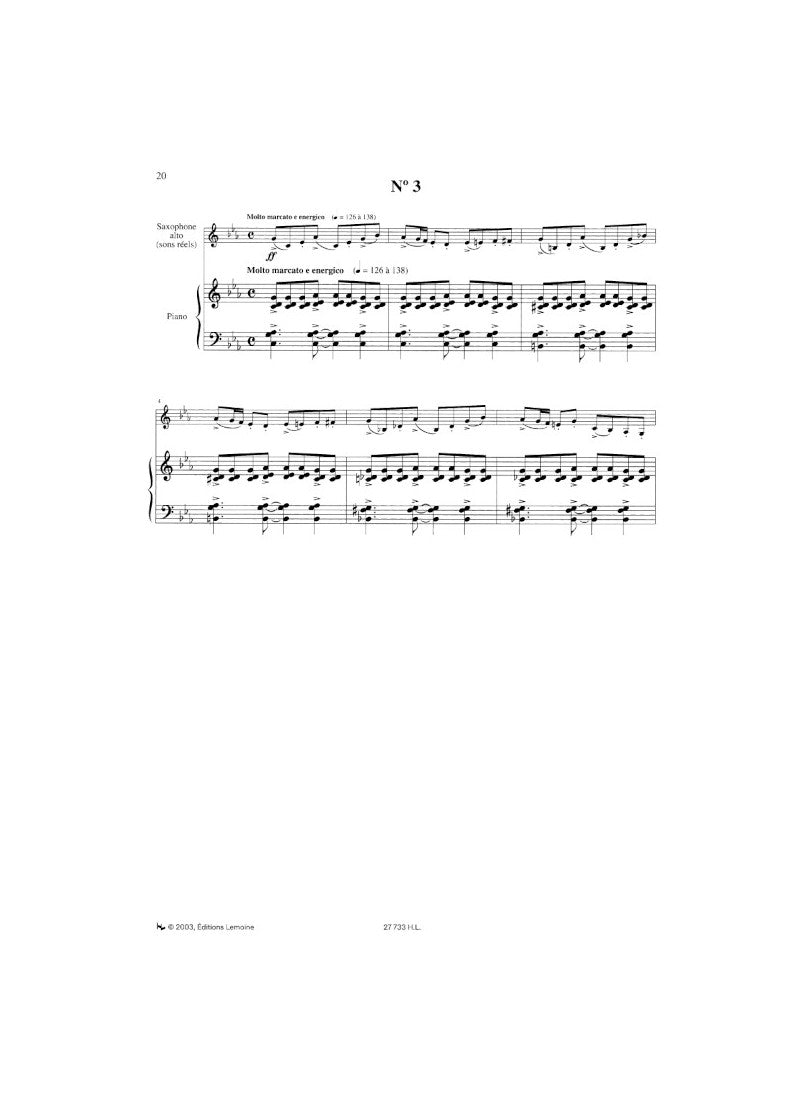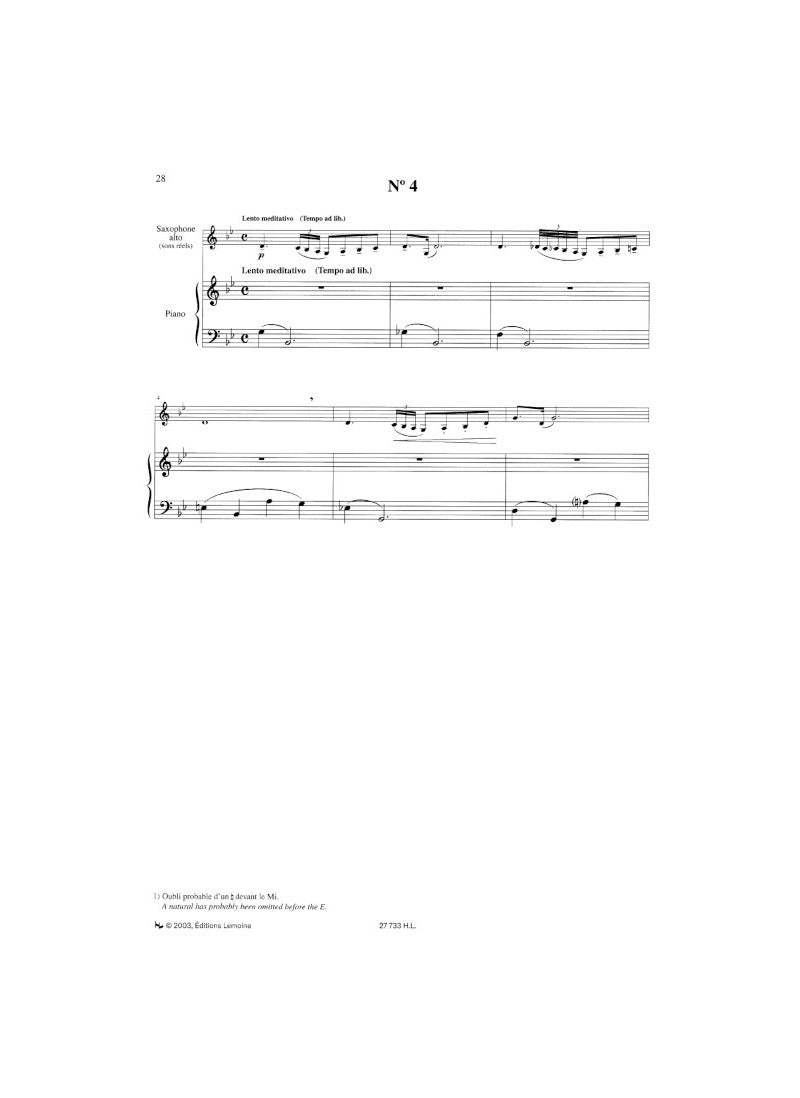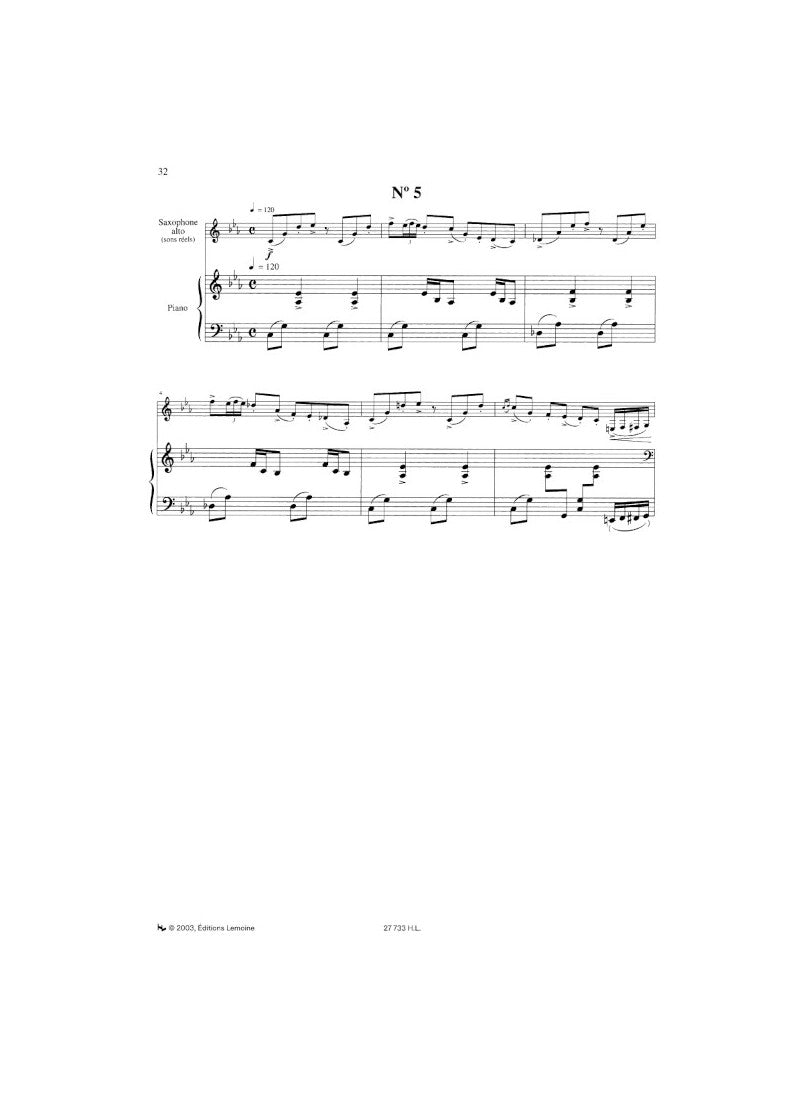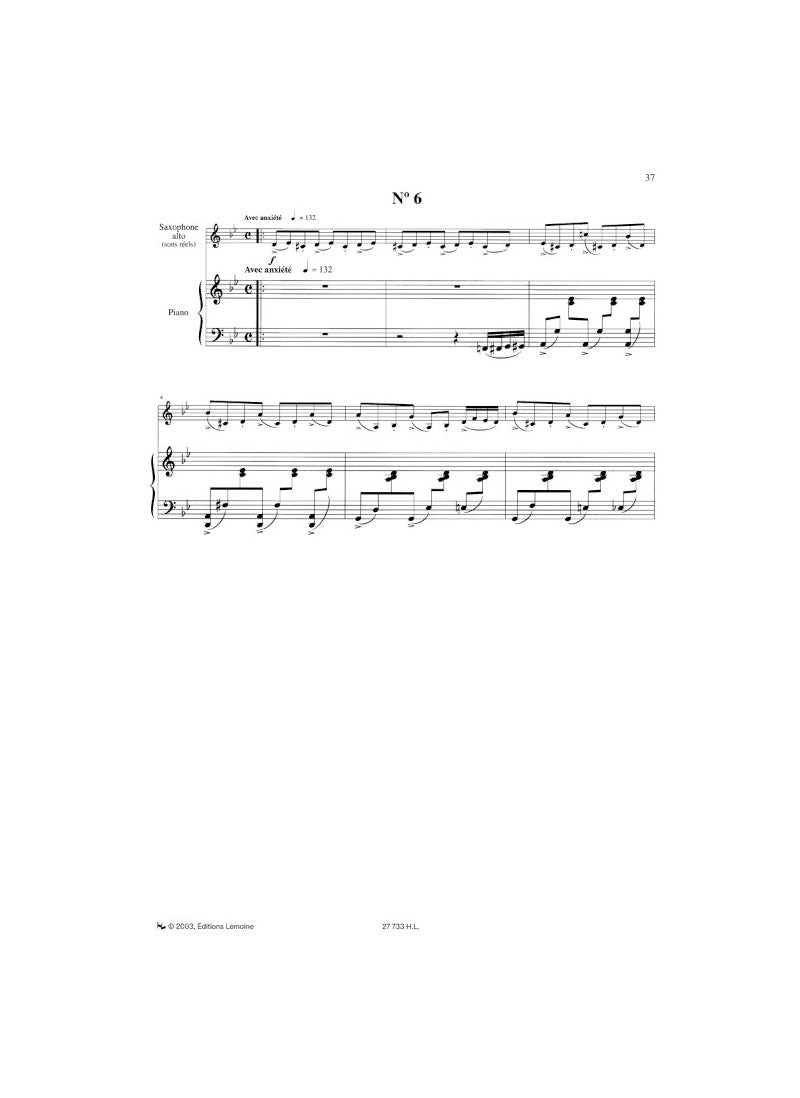Piazzolla: Tango-Études (for alto sax or clarinet and piano)
"Études tanguistiques"
In stock and typically ships within 1 business day.
- Composer: Astor Piazzolla (1921-1992)
- Arranger: Astor Piazzolla (1921-1992)
- Instrumentation (this edition): Piano, Alto Saxophone / Clarinet
- Originally for: Flute / Violin
- Work: Tango-Etudes
- ISMN:
- Size: 9.1 x 12.2 inches
- Pages: 52
Description
Some time in 1988, after he had returned the manuscript of the Tango-Etudes (or Tangoistic studies in the version for alto saxophone in Eb prepared in collaboration with Claude Delangle, we asked Astor Piazzolla if he could not harmonize them, echoing the requests of flautists after the original edition had been published for their instrument in 1987.
In February 1989, the composer wrote to us from Punta del Este, in Uruguay, where he was staying before returning to Buenos Aires: "Dear friend, finished the piano part of the Etudes tanguistiques for saxo alto and piano... Good luck to Mr Delangle and please tell him to forgive my music handwriting. I was in a hurry and could not do it better... Please let me know if you received the music."
And indeed, the manuscript arrived just a few days later - only to be carefully stored away! in fact it was so difficult to decipher it that the publication had to be shelved for quite some time. in December 1989, therefore, we published the version for alto saxophone as originally planned, leaving the harmonised version to follow at a later date. But Piazzolla's health subsequently declined, and he died in 1992. It was many years before the planned edition saw the light of day, following much painstaking work on the manuscript. (See the preface by Yann Ollivo).
Publishers use a lot of words to describe what they sell, and we know it can be confusing. We've tried to be as clear as possible to make sure you get exactly what you are looking for. Below are descriptions of the terms that we use to describe the various formats that music often comes in.
Choral Score
A score for vocalists that only contains the vocal lines. The instrumental parts are not there for reference. Generally, cheaper than a vocal score and requires multiple copies for purchase.
Facsimile
Reproductions of the original hand-written scores from the composer.
Full Score
For ensemble music, this indicates that the edition contains all parts on a single system (there are not separate parts for each player). In larger ensembles, this is for the conductor.
Hardcover
Hardbound. Generally either linen-covered or half-leather.
Orchestral Parts
Similar to a wind set, this is a collection of parts. In the case of strings, the numbers listed are the number of copies included, though generally these are available individually (often with minimum quantities required).
Paperback
When publishers offer multiple bindings (e.g. hardcover) or study scores, this is the "standard" version. If you're planning to play the music, this is probably what you want.
Performance / Playing Score
A score of the music containing all parts on one system, intended for players to share. There are not separate parts for each player.
Set of Parts
For ensemble music, this indicates that there are separate individual parts for each player.
Solo Part with Piano Reduction
For solo pieces with orchestra, this is a version that contains a piano reduction of the orchestra parts. For piano pieces, two copies are typically needed for performance.
Study Score
A small (think choral size) copy of the complete score meant for studying, and not playing. They make great add-ons when learning concertos and small chamber works.
Vocal Score
A score prepared for vocalists that includes the piano/organ part or a reduction of the instrumental parts.
Wind Set
For orchestral music, this is a collection of wind and percussion parts. The specific quantities of each instrument are notated.
With Audio
In addition to the printed music, the edition contains recordings of the pieces. This may be an included CD, or access to files on the internet.
With / Without Fingering (Markings)
Some publishers prepare two copies - a pure Urtext edition that includes no fingering (or bowing) suggestions and a lightly edited version that includes a minimal number of editorial markings.

